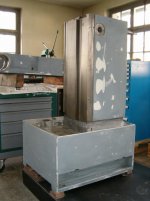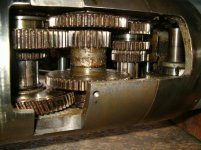ole.steen
Hot Rolled
- Joined
- Jun 11, 2002
- Location
- Oslo, Norway
I am in the process of restoring a Schaublin 22 mill, and the whole machine is really dirty with a caked mix of sharp chips and solidified coolant residue. The coolant layer is greenish in color, I have a feeling it might be one of those transparent, non- oil based formulas.
The Y-axis bellows is of the average black fabric type, and has got its share of goo. Do any of you know which solvents will ruin the bellows, and which are reasoably safe? What kind of glue is normally used to make these things?
Ole
The Y-axis bellows is of the average black fabric type, and has got its share of goo. Do any of you know which solvents will ruin the bellows, and which are reasoably safe? What kind of glue is normally used to make these things?
Ole










